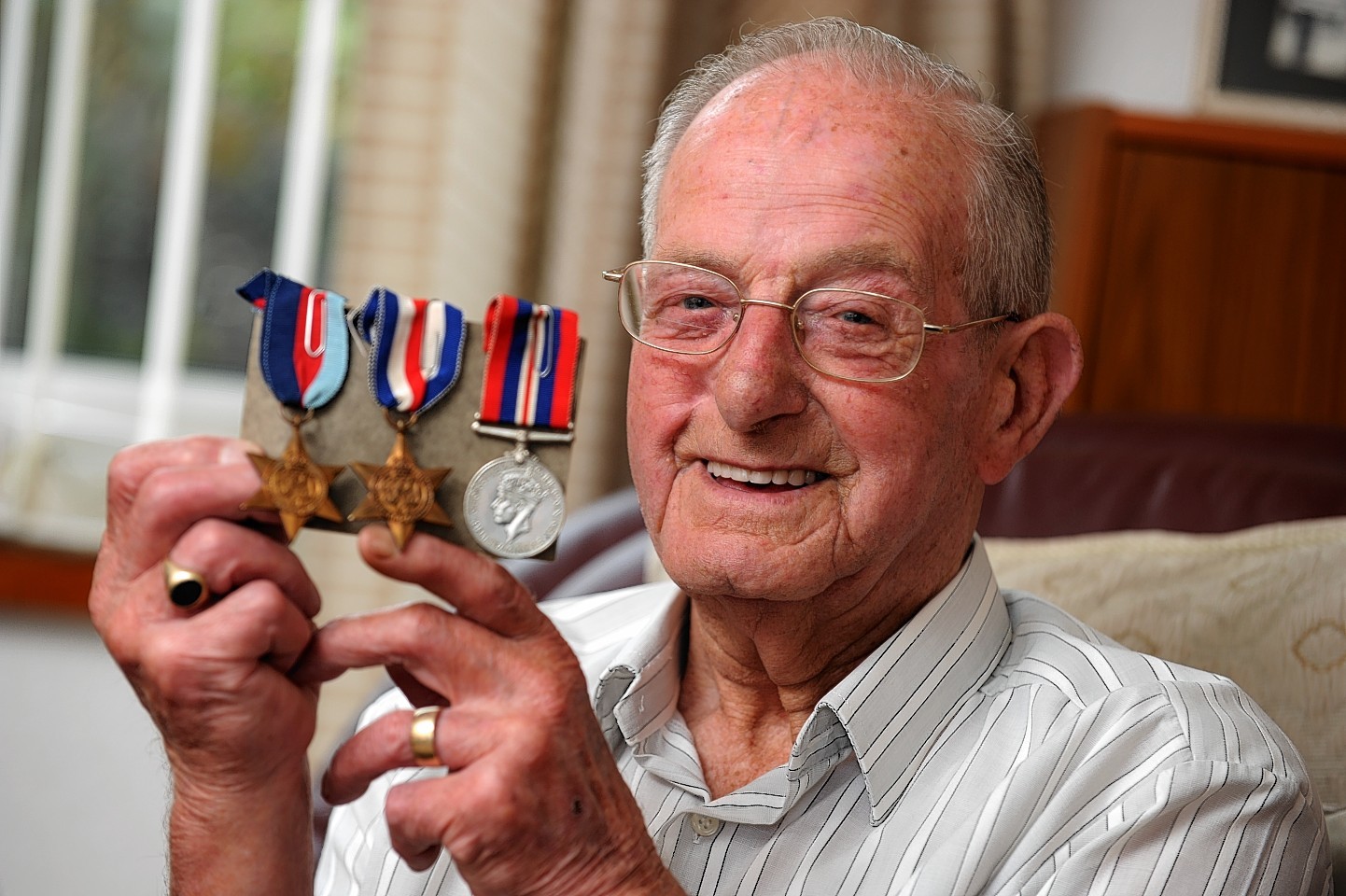One of Scotland’s last D-Day veterans has died – 70 years after he played his role in the turning point of World War II.
Arthur Grant was a teenage distillery worker when he was cast onto the bloody sands of Normandy during the allied invasion on June 6, 1944.
The Stonehaven man, who died on December 20 aged 90, served as a private in the Royal Pioneers Corp and landed at Sword beach, Luc-Sur-Mer, after just six weeks of training.
He shared his memories with the Press and Journal earlier this year, explaining: “We were ducking machine gun fire. It was a hell of a job.
“All these dead bodies, it drives you mad.”
Born on the Crathes estate in July 1924, he was the youngest of the six children of Walterina and William Grant – the head gardener on the castle grounds.
After the family moved to Stonehaven, Mr Grant’s first job was as a gardener at Cowie House, before he went to work at the town’s former Glenury Distillery.
Soon after conscription in 1944, he was sent across the English channel to Normandy along with thousands of other allied troops.
The first thing he recalled was the “smell of cordite” lying warm and thick in the air along the shore.
He spent his first two days in Normandy dodging German shells with only boiled sweets for food, one night sleeping side-by-side next to a fallen comrade.
Speaking to the Press and Journal in June, Mr Grant recalled his own fight to stay alive.
“You had to hope for the best,” he said.
“I have never spoken much about it. It was a long day right enough.”
A corporal by the end of the European assault Mr Grant fought in Normandy until the end of Operation Overlord in August 1944, after which he moved through Belgium and Holland.
In the town of Goes, in South Beveland, he was billeted with the Blomaard family and formed a friendship which would be rekindled almost 20 years later.
His wife of 63-years, Agnes Grant said: “They thought he’d been killed during the war.
“He had a photograph of the whole family so I said to him ‘what about getting in touch and see if they are on the go?’
“They still kept in touch.”
In the late-1940s he took up a career as a railway trackman, around the same time as he began seeing his wife to be.
The couple married in Stonehaven’s Dunnottar Parish Church in 1951 and have one son, Brian Grant, who stays at Drumlithie.
Father and son both found a fondness for fishing in the mid-1970s, and Arthur was a loyal member of the Stonehaven and District Angling Association for many years.
Following his retirement from British Rail’s Scotland division on July 22 1987 after 28 years, he channelled much of his time into fishing in the burns and rivers of Aberdeenshire.
He will be laid to rest at Dunnottar Church on Wednesday, December 31.
